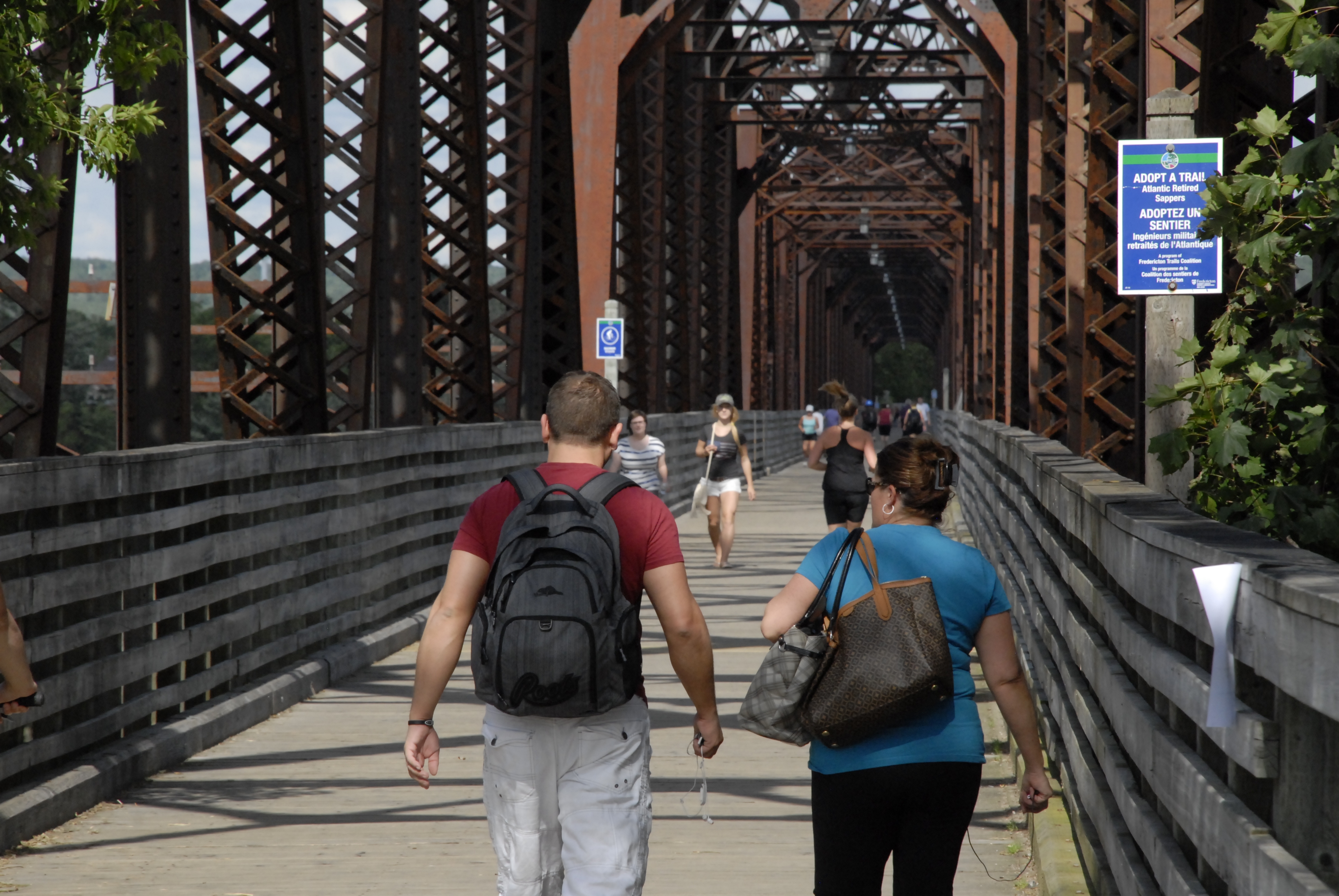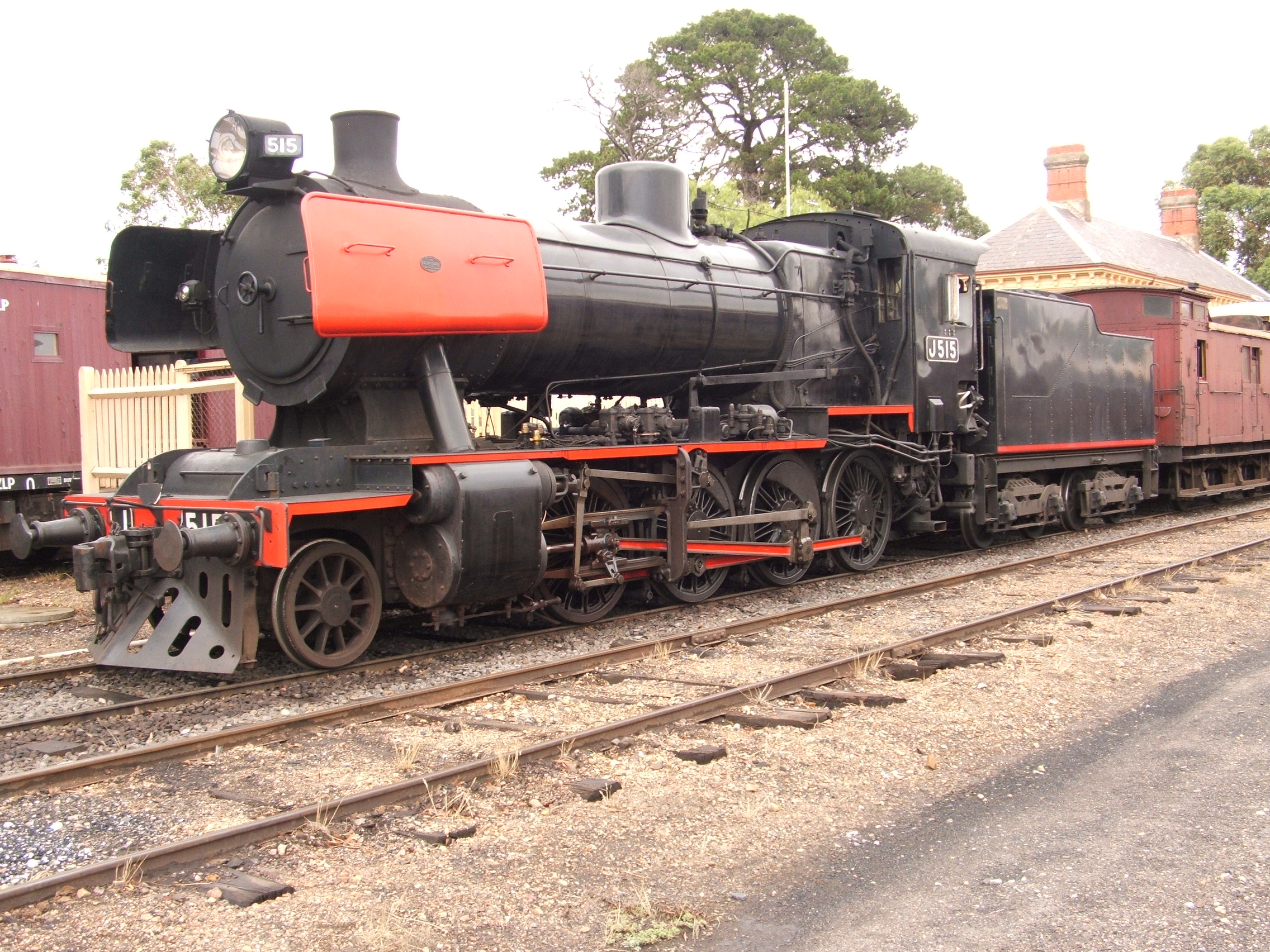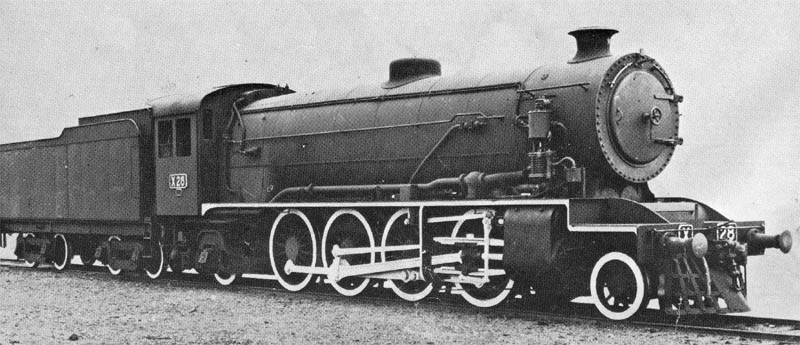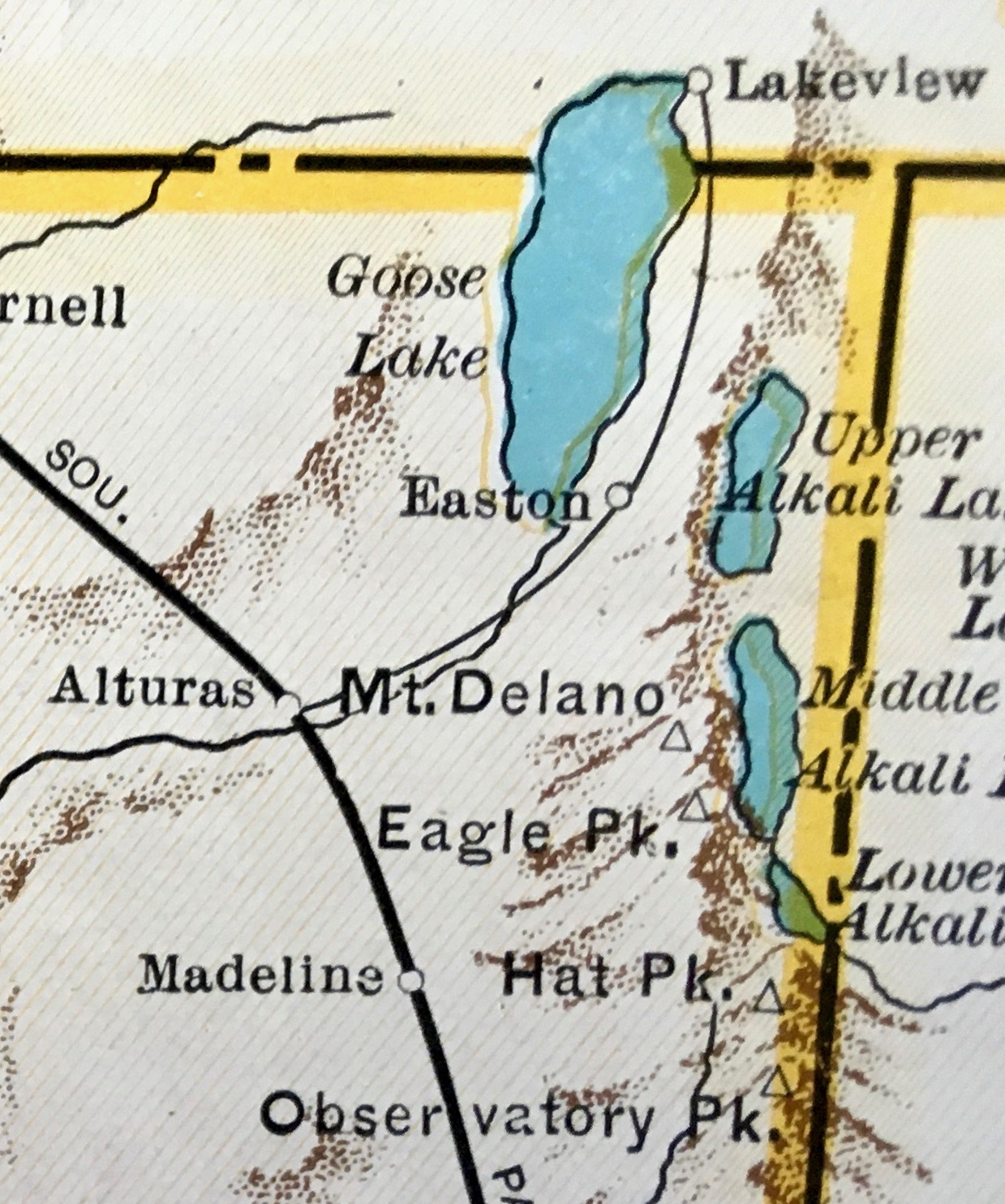|
Oregon, California And Eastern Railway
The Oregon, California and Eastern Railway (OC&E) was a rail line between Klamath Falls and Bly in the U.S. state of Oregon. After 70 years of bringing logs from nearby forests to local sawmills, the former railroad right of way was converted to the OC&E Woods Line State Trail. Early history In 1919, Robert E. Strahorn, a free-lance railroad builder and promoter, formed the OC&E by first acquiring an existing line, the Klamath Falls Municipal Railway, which ran between that city and Dairy. He planned to connect the OC&E to the Southern Pacific Railroad at Klamath Falls, the Oregon Trunk Line at Bend, the Union Pacific at Crane, and the Nevada–California–Oregon Railway at Lakeview. After establishing these connections, he hoped to sell the OC&E to one of the major railways. Using operating revenues provided by twelve different logging companies along the route, by 1923 the line had been extended from Dairy to milepost 39 at Sprague River where a 1.63% westbo ... [...More Info...] [...Related Items...] OR: [Wikipedia] [Google] [Baidu] |
Railbanked
A rail trail is a shared-use path on railway right of way. Rail trails are typically constructed after a railway has been abandoned and the track has been removed, but may also share the right of way with active railways, light rail, or streetcars ( rails with trails), or with disused track. As shared-use paths, rail trails are primarily for non-motorized traffic including pedestrians, bicycles, horseback riders, skaters, and cross-country skiers, although snowmobiles and ATVs may be allowed. The characteristics of abandoned railways—gentle grades, well-engineered rights of way and structures (bridges and tunnels), and passage through historical areas—lend themselves to rail trails and account for their popularity. Many rail trails are long-distance trails, while some shorter rail trails are known as greenways or linear parks. Rail trails around the world Americas Bermuda The Bermuda Railway ceased to operate as such when the only carrier to exist in Bermuda folded in ... [...More Info...] [...Related Items...] OR: [Wikipedia] [Google] [Baidu] |
Spokane, Portland And Seattle Railway
The Spokane, Portland & Seattle Railway (SP&S) was a railroad in the northwest United States. Incorporated in 1905, it was a joint venture by the Great Northern Railway and the Northern Pacific Railway to build a railroad along the north bank of the Columbia River. Remnants of the line are currently operated by BNSF Railway and the Portland and Western Railroad. History The railroad was chartered in 1905 by James J. Hill to connect the two transcontinental railroads owned by him, the Northern Pacific (NP) and Great Northern (GN), to Portland, Oregon from Spokane, Washington, to gain a portion of the lumber trade in Oregon, a business then dominated by E.H. Harriman's Union Pacific and Southern Pacific railroads. Construction began in 1906"Greatest Year for Railroad Construction: Building in Territory Tributary to Portland During 1906 Breaks All Records—City Now Strategic Point in Struggle of Giants". (January 1, 1907). ''The Morning Oregonian'' (Portland), section 2, p. 20. ... [...More Info...] [...Related Items...] OR: [Wikipedia] [Google] [Baidu] |
Southern Pacific Class AC-2
Southern Pacific Railroad's AC-2 class of steam locomotives was the second in the AC series of cab forward locomotives built for Southern Pacific (SP). This class consisted of locomotives that were rebuilt from Baldwin Baldwin is a Germanic name, composed of the elements ''bald'' "bold" and ''win'' "friend". People * Baldwin (name) Places Canada * Baldwin, York Regional Municipality, Ontario * Baldwin, Ontario, in Sudbury District * Baldwin's Mills, Qu ...-built SP MC-4 class locomotives by 1930. The rebuild from MC-4 class gained the locomotives about in tractive effort, but also increased the locomotives' weight by about . The locomotives were deemed successful and remained in active service until after World War II. References * Baldwin locomotives Mallet locomotives AC-02 2-8-8-2 locomotives Simple articulated locomotives Steam locomotives of the United States Scrapped locomotives Standard gauge locomotives of the United States {{steam-loco-s ... [...More Info...] [...Related Items...] OR: [Wikipedia] [Google] [Baidu] |
Southern Pacific Class AC-1
Southern Pacific Railroad's AC-1 class of cab forward steam locomotives consisted of locomotives rebuilt from MC-1 and MC-2 class locomotives that were originally built by Baldwin Locomotive Works The Baldwin Locomotive Works (BLW) was an American manufacturer of railroad locomotives from 1825 to 1951. Originally located in Philadelphia, it moved to nearby Eddystone, Pennsylvania, in the early 20th century. The company was for decades t ... in 1909.. The MC-2 class was the first class of locomotives built and delivered to SP as cab forward locomotives in late 1909. The AC-1 class was the first of the successful AC series of cab forward locomotives that numbered nearly 200 in total on the SP. Southern Pacific No. 4002 was rebuilt in June 1923 as a Cab Forward. Their rebuilds into class AC-1 was around June 1931. SP used the rebuilt locomotives through the traffic rush of World War II, then the SP removed them from the roster soon after the war. They were all retired from ac ... [...More Info...] [...Related Items...] OR: [Wikipedia] [Google] [Baidu] |
2-8-0
Under the Whyte notation for the classification of steam locomotives, represents the wheel arrangement of two leading wheels on one axle, usually in a leading truck, eight powered and coupled driving wheels on four axles, and no trailing wheels. In the United States and elsewhere, this wheel arrangement is commonly known as a Consolidation, after the Lehigh and Mahanoy Railroad’s ''Consolidation'', the name of the first 2-8-0.White, John H. Jr. (1968). ''A history of the American locomotive; its development: 1830-1880''. New York: Dover Publications, p. 65. The notation 2-8-0T indicates a tank locomotive of this wheel arrangement, the "T" suffix indicating a locomotive on which the water is carried in side-tanks mounted on the engine rather than in an attached tender. The Consolidation represented a notable advance in locomotive power. After 1875, it became "the most popular type of freight locomotive in the United States and was built in greater quantities than any other si ... [...More Info...] [...Related Items...] OR: [Wikipedia] [Google] [Baidu] |
2-8-2
Under the Whyte notation for the classification of steam locomotives, represents the wheel arrangement of two leading wheels on one axle, usually in a leading truck, eight powered and coupled driving wheels on four axles and two trailing wheels on one axle, usually in a trailing truck. This configuration of steam locomotive is most often referred to as a Mikado, frequently shortened to Mike. At times it was also referred to on some railroads in the United States of America as the McAdoo Mikado and, during World War II, the MacArthur. The notation 2-8-2T indicates a tank locomotive of this wheel arrangement, the "T" suffix indicating a locomotive on which the water is carried in tanks mounted on the engine rather than in an attached tender. Overview The 2-8-2 wheel arrangement allowed the locomotive's firebox to be placed behind instead of above the driving wheels, thereby allowing a larger firebox that could be both wide and deep. This supported a greater rate of combustion ... [...More Info...] [...Related Items...] OR: [Wikipedia] [Google] [Baidu] |
Great Northern Railway (U
Great Northern Railway or Great Northern Railroad may refer to: Australia *Great Northern Railway (Queensland) in Australia *Great Northern Rail Services in Victoria, Australia *Central Australia Railway was known as the great Northern Railway in the 1890s in South Australia *Main North railway line, New South Wales (Australia) Canada *Great Northern Railway of Canada Ireland *Great Northern Railway (Ireland) New Zealand *Kingston Branch (New Zealand) in Southland *Main North Line, New Zealand and Waiau Branch in Canterbury United Kingdom *Great Northern Railway (Great Britain) **Thameslink and Great Northern, a current operator of trains on this route United States *Great Northern Railway (U.S.), now part of the BNSF Railway system *International – Great Northern Railroad in Texas, U.S., now part of the Union Pacific Railroad *New Orleans, Jackson and Great Northern The New Orleans, Jackson and Great Northern was a gauge railway originally commissioned by the St ... [...More Info...] [...Related Items...] OR: [Wikipedia] [Google] [Baidu] |
CTC Board
''Railroads Illustrated'', formerly known as ''CTC Board'', was a monthly magazine, published by White River Productions (WRP), devoted to railroad photography. WRP purchased ''CTC Board'' magazine from Hundman Publishing after the May 2006 issue, and rebranded the magazine as ''Railroads Illustrated'', and used the CTC Board name for the news section. December 2014 marked the final monthly issue, with future expanded editions to be released annually. The news section and some feature content now appears in an expanded ''Railfan & Railroad'', which was acquired by WRP in 2014. CTC Board (1970-2006) ''Railroads Illustrated'' was originally published as ''CTC Board'' (ISSN 0164-8373), a monthly magazine devoted to railroad photography, rail industry and tourist railroad news, and historical articles, from 1970 to 2006. The magazine's name referred to the centralized traffic control displays used by train dispatchers to control rail traffic across a given territory. The magazine's we ... [...More Info...] [...Related Items...] OR: [Wikipedia] [Google] [Baidu] |
Zig Zag (railway)
A railway zig zag or switchback, is a method of climbing steep gradients with minimal need for tunnels and heavy earthworks. For a short distance (corresponding to the middle leg of the letter "Z"), the direction of travel is reversed, before the original direction is resumed. Some switchbacks do not come in pairs, and the train may then need to travel backwards for a considerable distance. A location on railways constructed by using a zig-zag alignment at which trains must reverse direction to continue is a reversing station. One of the best examples is the Darjeeling Himalayan Railway, a UNESCO World Heritage Site railway in India, that has six full zig zags and three spirals. Advantages Zig zags tend to be cheaper to construct because the grades required are discontinuous. Civil engineers can generally find a series of shorter segments going back and forth up the side of a hill more easily and with less grading than they can a continuous grade, which must contend wi ... [...More Info...] [...Related Items...] OR: [Wikipedia] [Google] [Baidu] |
Logging
Logging is the process of cutting, processing, and moving trees to a location for transport. It may include skidding, on-site processing, and loading of trees or logs onto trucks or skeleton cars. Logging is the beginning of a supply chain that provides raw material for many products societies worldwide use for housing, construction, energy, and consumer paper products. Logging systems are also used to manage forests, reduce the risk of wildfires, and restore ecosystem functions, though their efficiency for these purposes has been challenged. In forestry, the term logging is sometimes used narrowly to describe the logistics of moving wood from the stump to somewhere outside the forest, usually a sawmill or a lumber yard. In common usage, however, the term may cover a range of forestry or silviculture activities. Illegal logging refers to the harvesting, transportation, purchase, or sale of timber in violation of laws. The harvesting procedure itself may be illegal, includin ... [...More Info...] [...Related Items...] OR: [Wikipedia] [Google] [Baidu] |
Lakeview, Oregon
Lakeview is a town in Lake County, Oregon, United States. The population was 2,418 at the 2020 census. It is the county seat of Lake County. The city bills itself as the "Tallest Town in Oregon" because of its elevation, above sea level. Lakeview is situated in the Goose Lake Valley at the foot of the Warner Mountains and at the edge of Oregon's high desert country. Its economy is based on agriculture, lumber production, and government activities. In addition, tourism is an increasingly important part of the city's economy. Oregon's Outback Scenic Byway passes through Lakeview. History Native Americans probably occupied the area around Lakeview for as early as 14,000 years ago, as evidenced by artifacts found in the Paisley Caves north of Lakeview."Lake County History" Oregon Historical County Rec ... [...More Info...] [...Related Items...] OR: [Wikipedia] [Google] [Baidu] |
Nevada–California–Oregon Railway
The Nevada–California–Oregon Railway was a narrow gauge railroad originally planned to connect Reno, Nevada, to the Columbia River. However, only of track were laid so service never extended beyond Lakeview, Oregon. Because of the company’s reputation for mismanagement, it was often called the "Narrow, Crooked & Ornery" railroad. History The railroad was organized in Reno in June 1880 as the Nevada and Oregon Railroad. It was decided that the best plan was to build north to the Columbia River to service cattle ranches and farms in northeastern California and eastern Oregon. The northern terminus was to be The Dalles, Oregon, since that city was located on the Columbia River and had no eastern or southern rail connections at that time."N-C-O RY" Gauge on the Net—Old Time Narrow Gauge Railroading, Cedar Ridge, California, 2007. T ... [...More Info...] [...Related Items...] OR: [Wikipedia] [Google] [Baidu] |







